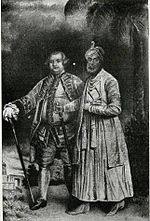
Madras Presidency
The Madras Presidency was officially known as the Presidency of Fort St. George by the British and was an administrative subdivision, which was also referred to as the Madras Province. The Madras Presidency, during the British regime, covered a vast expanse of the southern part of India that encompasses modern-day Tamil Nadu, the Lakshadweep Islands, Northern Kerala, Rayalaseema (AP), Coastal Andhra, districts of Karnataka and various districts of southern Odisha. The winter capital of the presidency was Madras and Ootacamund was the summer capital.
Origin and History
The Madras Presidency owes its existence to the East India Company who bought a village in South India in 1639 called Madraspatnam. They initiated the Agency of Fort St. George, which was the starting point of the presidency as Madraspatnam, later upgraded to a Presidency in 1652. The first president Elihu Yale of the Presidency was appointed in 1684. Fort St. George was later officially turned into one of the three presidencies ruled by the East India Company out of which, one was the Madras Presidency. The head of the Presidency was called the Governor rather than the President, which was carried forth till 1947. Madras had a regular voting system through elections that was carried out up till 1939, the outbreak of the Second World War. The massive Madras Presidency comprised of 22 districts by 1908 that were further managed by District Collectors. These areas were further sub divided with the villages being the smallest unit of the Presidency.
In fact, it is said that the area of the Madras Presidency kept increasing with the acquisitions and by the year 1800, South India was basically under the British rule.
The Madras Presidency was administered through the Governor and a council. Furthermore, there were five Indian princely states that were under the political control of the Madras Presidency, namely, Cochin, Sandur, Banganpalle, Travancore and Pudukkottai.
After independence in 1947, the Madras Presidency became the state of Madras and the other regions that were a part of the erstwhile Presidency were constituted in separate states of Andhra Pradesh, Kerala and Mysore. Later on in 1968, the state of Madras was rechristened as Tamil Nadu.
A lot of the consolidation of South India was due to the British conquest, because until then, South India never had a single ruler and was divided up into multiple kingdoms. This somewhat had to do with the rough terrain such as the hills and highlands. The Tamil dominated region to the extreme south was basically divided amongst the Chera, Chola and Pandya kingdoms, whereas the kings of Kalinga rules over present-day Odisha and other adjoining regions. Even during the Mughal era, South India was only under their control for a short span of time. Madras did significantly contribute to the Indian was of independence during the beginning of the 20th century and was the first British Presidency that had the system of diarchy.
Interesting facts and comparisons
- The Madras Presidency till the year 1815 also had its own currency called ‘Fanam’, wherein 12 Fanams were equivalent to one rupee.
- Chennai, as we know it today, is basically an area that encompasses the Fort St. George and other European settlements and villages around it.
- Madras was bombed during the Second World War by SMS Emden, a German light cruiser.
Reference
Categories: Fashion Cults, Royalty
